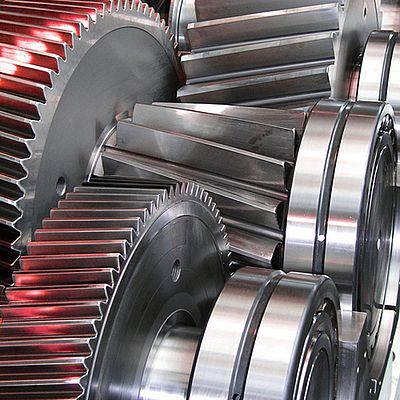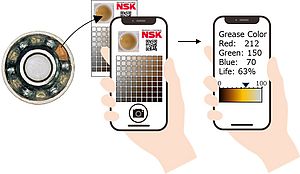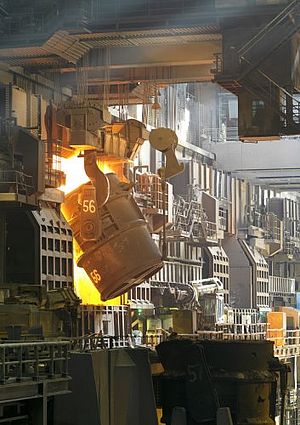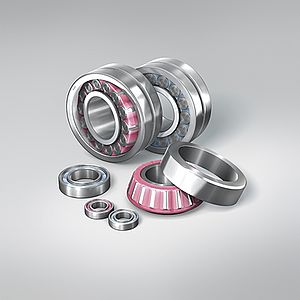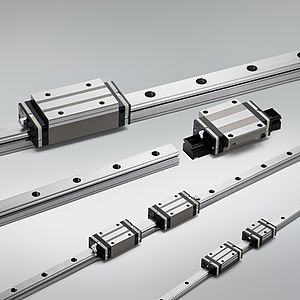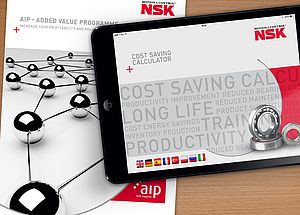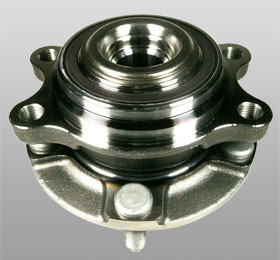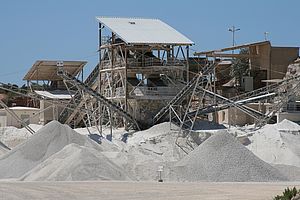Bearings for modern industrial drive systems must deliver efficient and reliable performance even in the most demanding of environments. The design of drive systems can be a complicated process as can diagnosing the cause of a power transmission failure.
Bearings used in modern industrial drive systems must meet the most demanding requirements. The range from domestic washing machines to wind turbines to mining machines is vast and each application requires a different combination of values to be met. The NSK product range varies from miniature bearings with a bore of 1mm up to rolling bearings with a diameter of 5 metres, with an emphasis on heat and seizure resistance, improved material and lubrication technology.
Designers of industrial drive systems continue to develop new gear types and configurations so the bearing selection process must be considered as crucial in maintaining the desired performance of the drive system.
When selecting a suitable bearing type the special operating conditions of the respective bearing locations have to be taken into consideration, illustrated on this hypothetical example are:
• Full complement cylindrical roller bearing for low speed and high radial loads.
• Spherical roller bearings for ultra-high loads and components in an oblique arrangement
• Cylindrical roller bearings for high speed and high loads.
• Four-point bearing, acting as the locating bearing for the high speed stage, while the cylindrical roller bearing takes the radial load.
All the determining factors need to be carefully considered in order to ensure the correct specification is produced for each application: The load, or input torque, must be determined and established as either variable or constant. The level of speed and direction of rotation need to be evaluated as well as the interaction between the load and the speed.
The arrangement of the shafts is a vital issue to be considered, since the requirements of a vertical configuration are very different to those for a horizontal or inclined arrangement. This, along with any considerations for axial movement will affect the design of the lubrication and sealing systems.
One crucial factor is bearing life, which is mainly driven by the application itself. NSK has developed the ABLE-Forecaster (Advanced Bearing Life Equation) which uses data from actual applications and tests, which has been accumulated over decades of work in this field, and combines it with data for lubrication systems, environmental conditions, contamination factors and material analysis.
The choice of materials for the construction of the bearing is also a crucial consideration in the selection process. Both the material of the bearing itself as well as any sealing materials must be carefully considered to ensure the drive system performs to the desired level.
The environment in which the bearing must perform has a major impact on the final design of the component. Exposure to dust, humidity, temperature extremes or aggressive agents must be considered, and accounted for, in the process of selecting the correct bearing. This also affects the type of lubrication that can be used – and may determine the sealing required on each component. Lubrication has a major impact on bearing life, so great care is required to strike the right balance.
The method of assembly which is to be used for the drive system is an important factor in determining the bearing design; since some bespoke designs need to be assembled by hand. This is also considered alongside the maintenance requirements for the drive system, which may need to be disassembled at regular intervals.
All of the factors reviewed so far will have an impact on the costs of production and these must be balanced to ensure that benefits of improved performance and reliability can be justified for the application in question.


